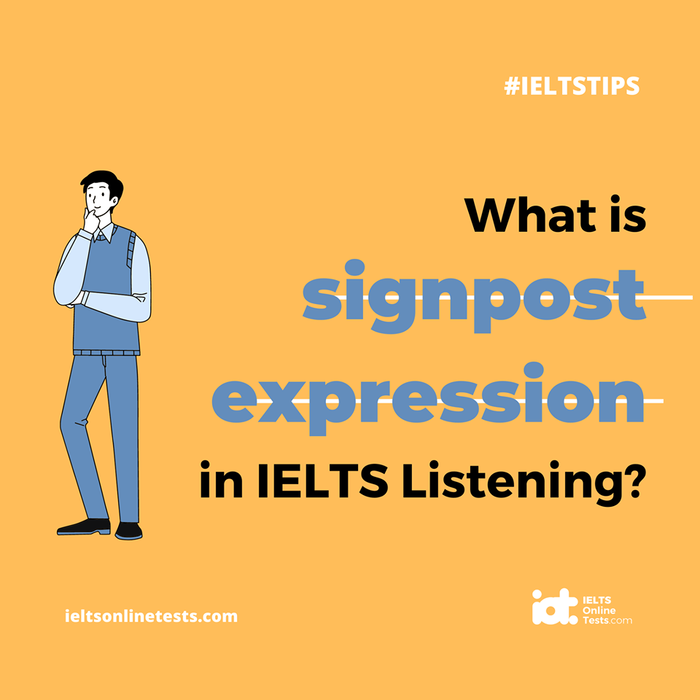
WHAT IS SIGNPOST EXPRESSION IN IELTS LISTENING?
Signpost expression is something you must have heard of quite a few times before entering an IELTS test, so what exactly is it and why is it so important to IELTS Listening?
Signposting language is the words and phrases that people use in order to guide the listener coherently through what is being said.
It is used to make clear what has just happened, and what is going to happen next.
So in other words, it acts as a guide so the listener can follow what you are saying.
Why is this important for IELTS?
In section 4 of the listening you have to listen to a talk in an academic setting, such as a university.
It is usually a lecture by a professor, a presentation by a student, or a talk by a university staff member. So it is possible that signposting will be used within this.
This lesson is designed to help you with Section 4 IELTS listenings that are a lecture, though the language for a presentation or talk may be the same or similar.
If you know the type of language that is used to guide you, it will help you to follow the lecture.
This is particuarly important if your listening skills are weaker than they should be because you will easily get lost if you don't know where you are.
Examples of Lecture Signposting Language
This table sets out some of the key language that guides you on the overall topic and content of the lecture, and when different sections of the lecture are being discussed.
The table includes the signposting language to signal the end of the talk. However you are every unlikly to hear this used in IELTS because as section 4 of the listening is only around 4-5 minutes, you only usually hear the first part of the lecture or presentation.
Remember there are lots of different ways to say these things, so what you hear could be phrased slightly differently.
Signposting Examples
| Purpose | Signpost Language |
|---|---|
| Introducing the topic of the lecture |
|
| Explaining the lecture structure (sections / subtopics) |
|
| Introducing the first section / subtopic or first of a list of points |
|
| Finishing a section |
|
| Starting a new section |
|
To signal the end of the talk / Summing up |
|
Practice
Practice more at: https://ieltsonlinetests.com/ielts-exam-library




